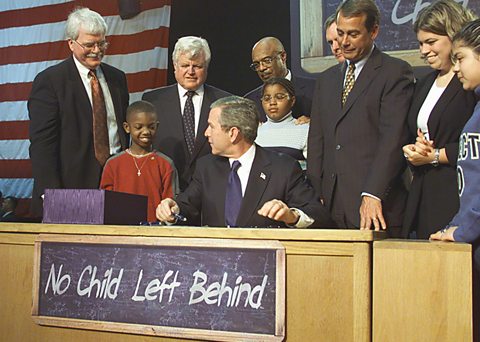Government responses to educational inequalities
No Child Left Behind Act (NCLB)

When George W. Bush was president, the then Republican-led Congress passed the No Child Left Behind Act 2001.
This was to ensure schools within states reached a certain standard in basic skills before receiving federal funding for education. However, each state was to set their own standards.
Success of No Child Left Behind Act
There was fierce debate over the success of NCLB.
Supporters claimed:
- reading scores and scores in maths improved at their fastest rate for many years
- reading and maths scores for African American and Hispanic children were at an all-time high
- the gap between African American/Hispanic children and white children's scores in reading and maths were at the lowest ever levels
Critics claimed:
- due to the states drawing up their own tests, it was easier to inflate results
- reading and maths scores improved as schools 'manipulated results' to retain funding
- NCLB narrowed the curriculum as states focused resources on reading and maths
Every Student Succeeds Act
In December 2014, the NCLB Act was replaced by the Every Student Succeeds Act. This was to тprovide all children significant opportunity to receive a fair, equitable, and high-quality education, and to close educational achievement gapsт.
Many schools had failed to meet the No Child Left Behind Actтs targets and had received funding regardless.
Republicans disliked the fact that the Department of Education could micromanage schools т especially after the election of President Obama.
The new act was meant to give power back to the individual states, though critics argued it would lead to little change.